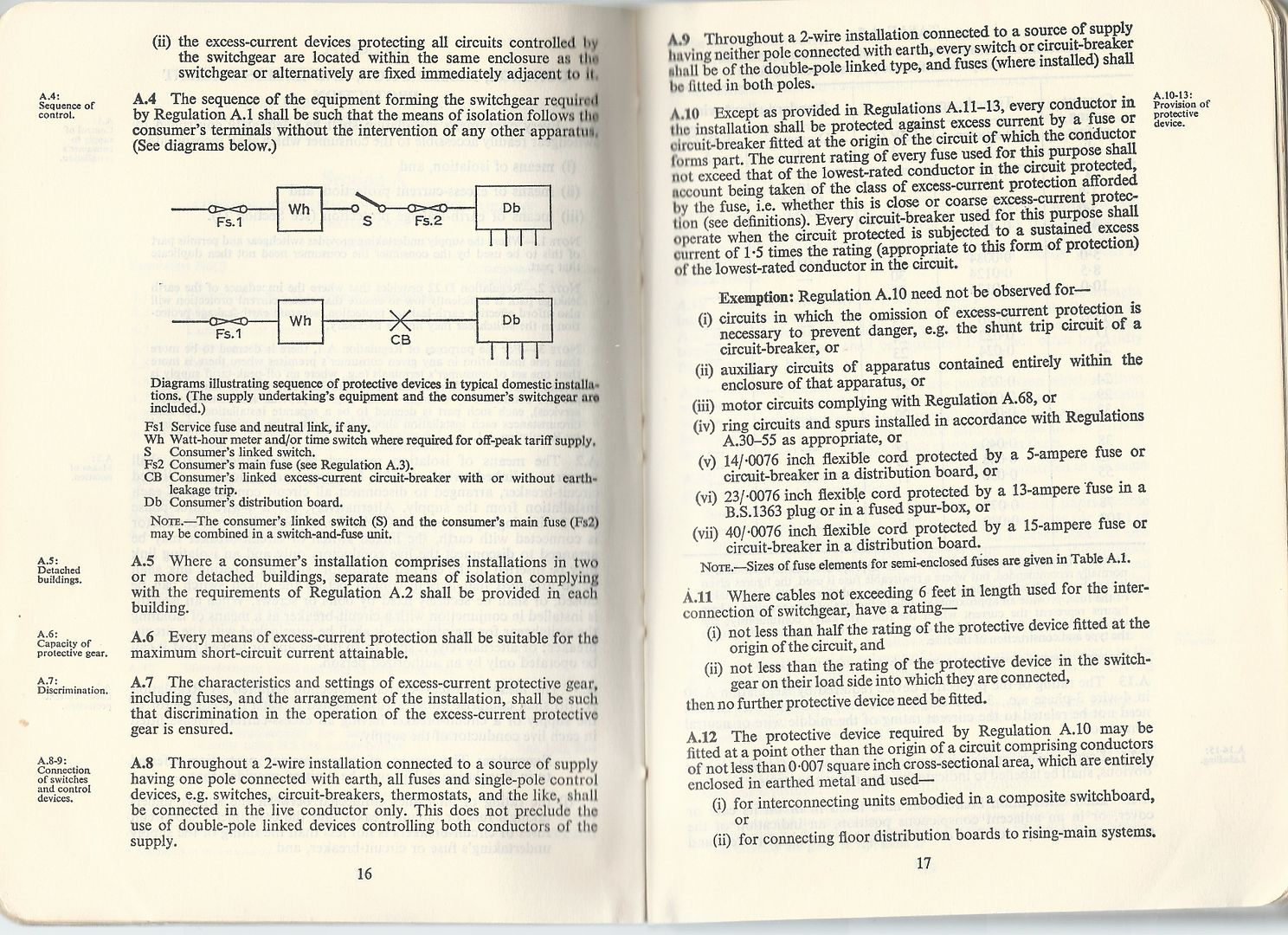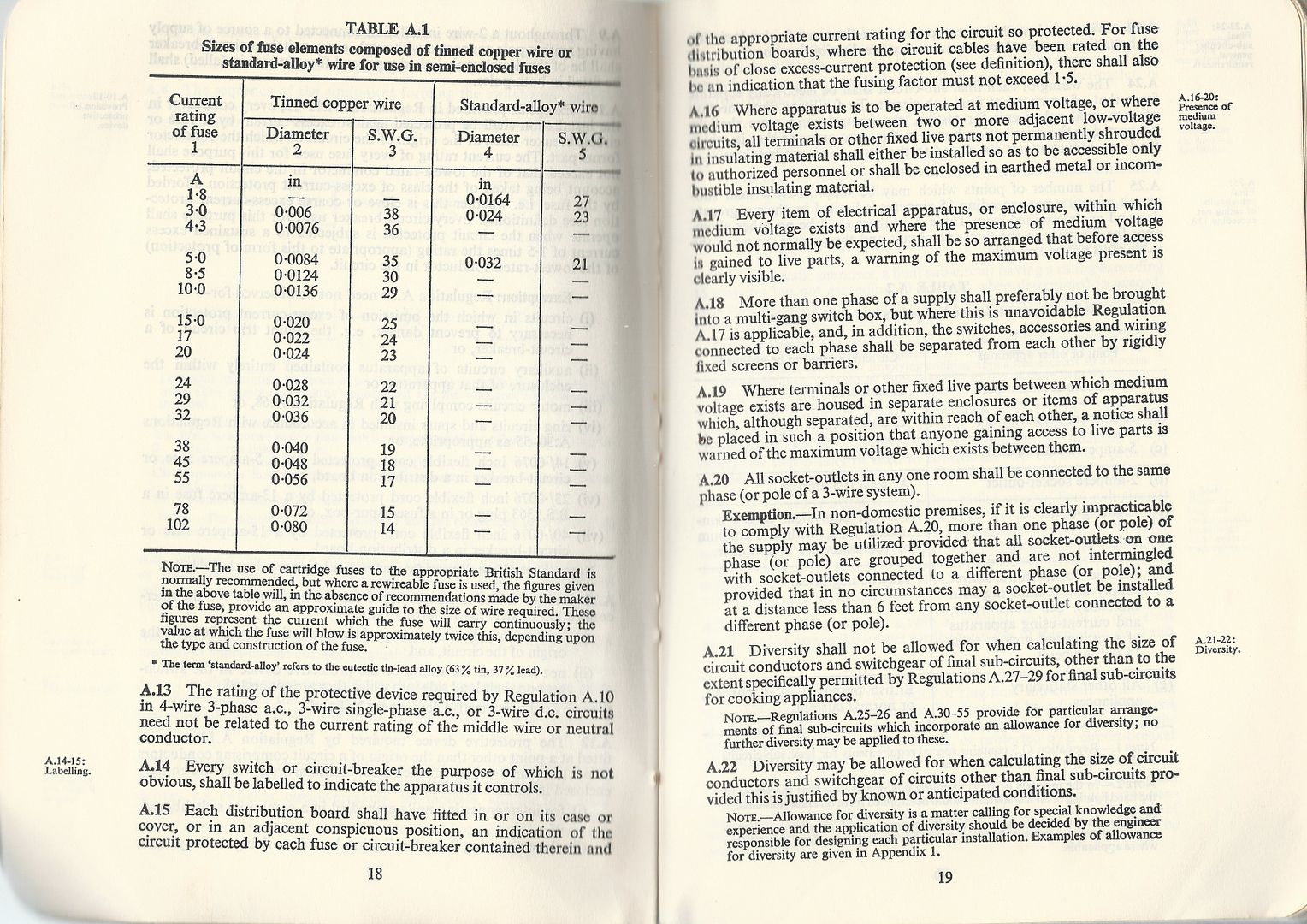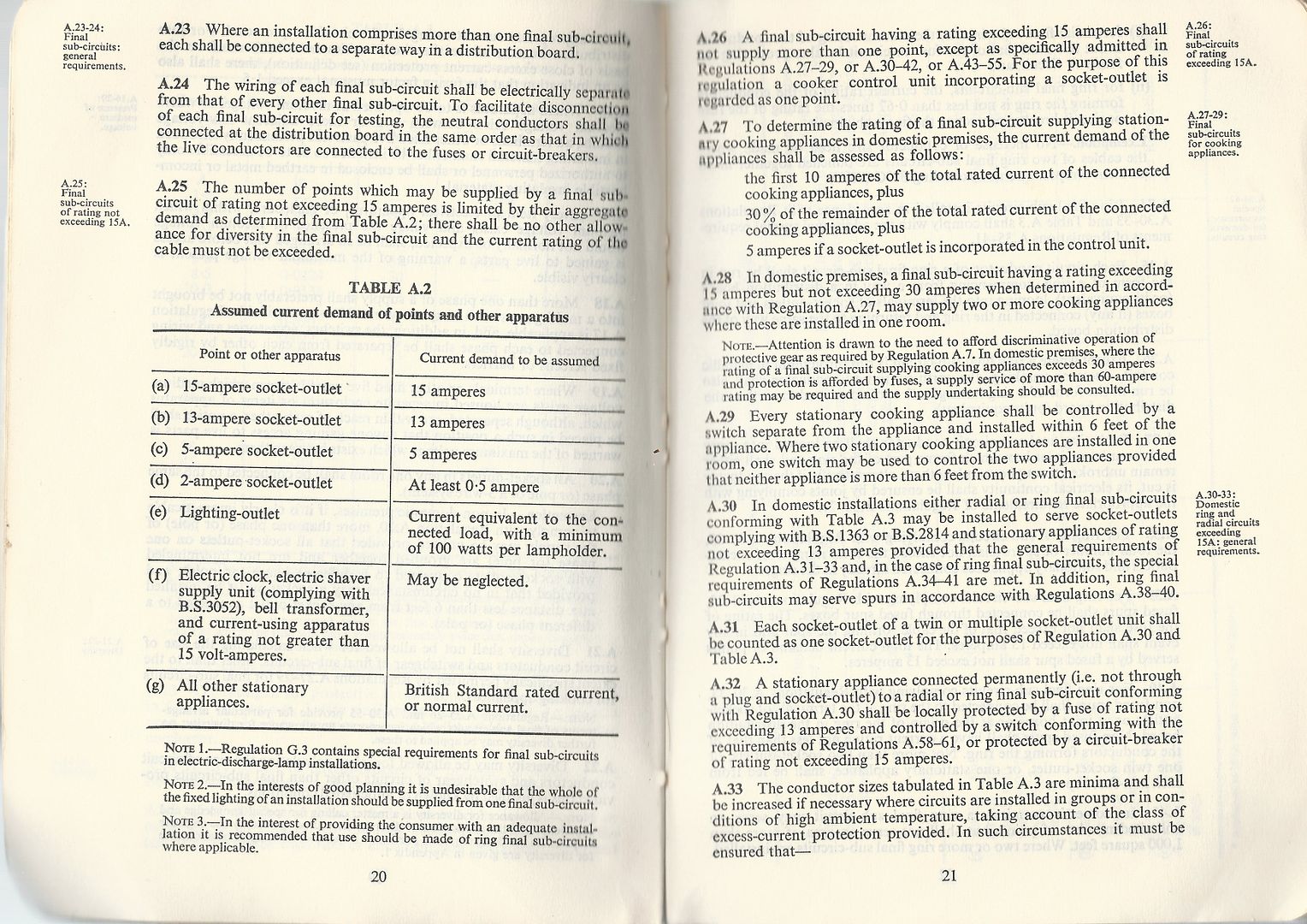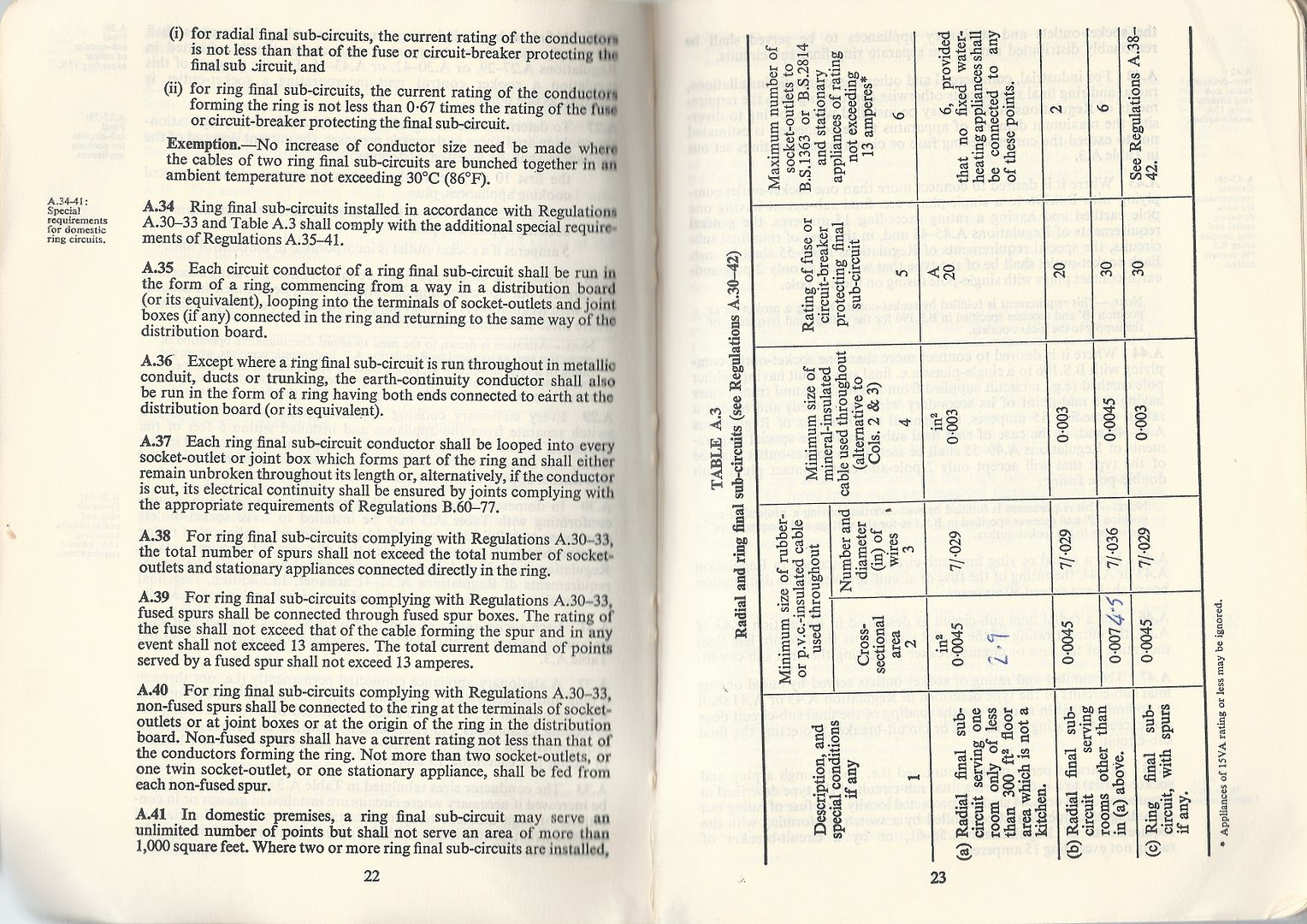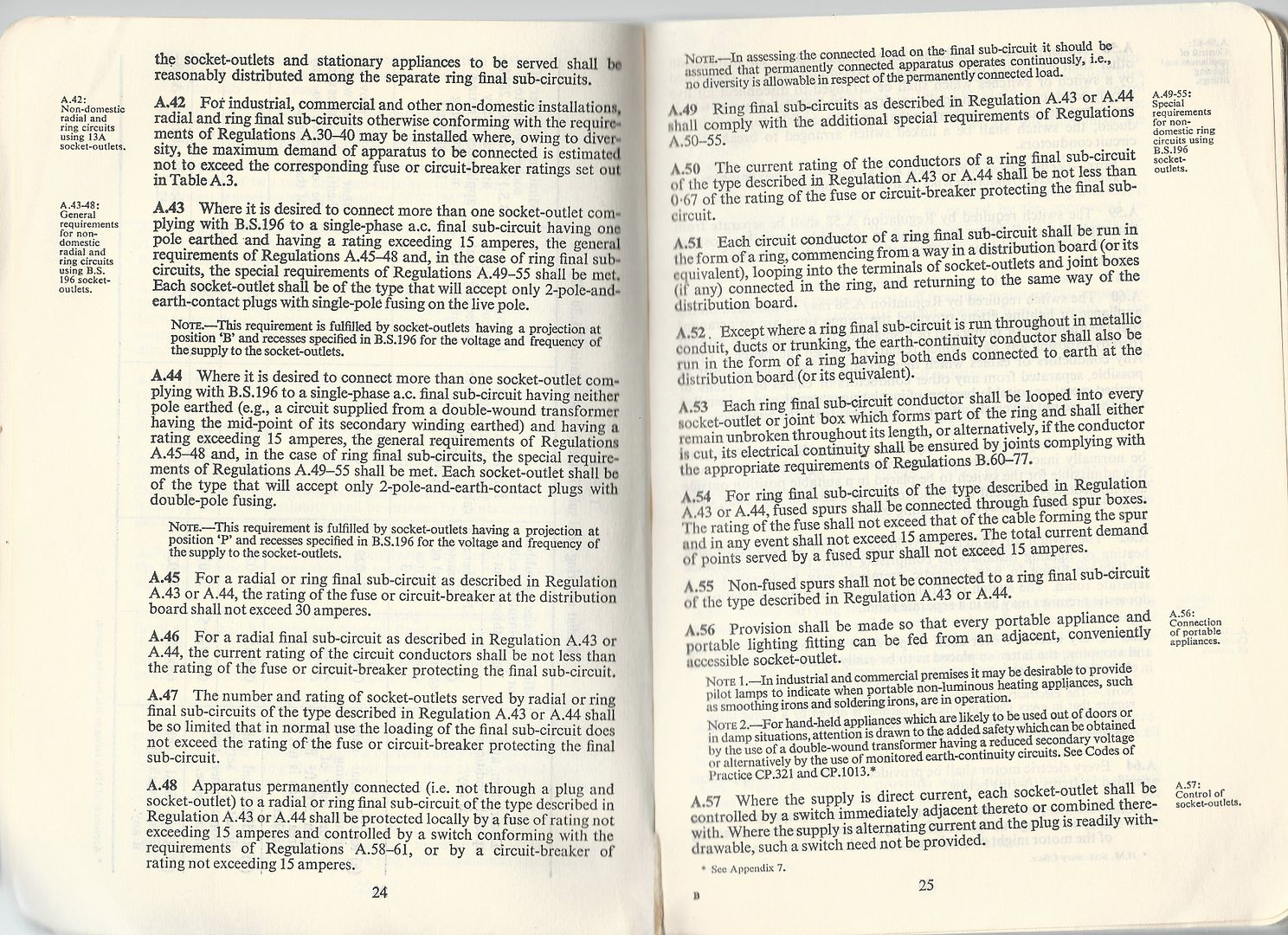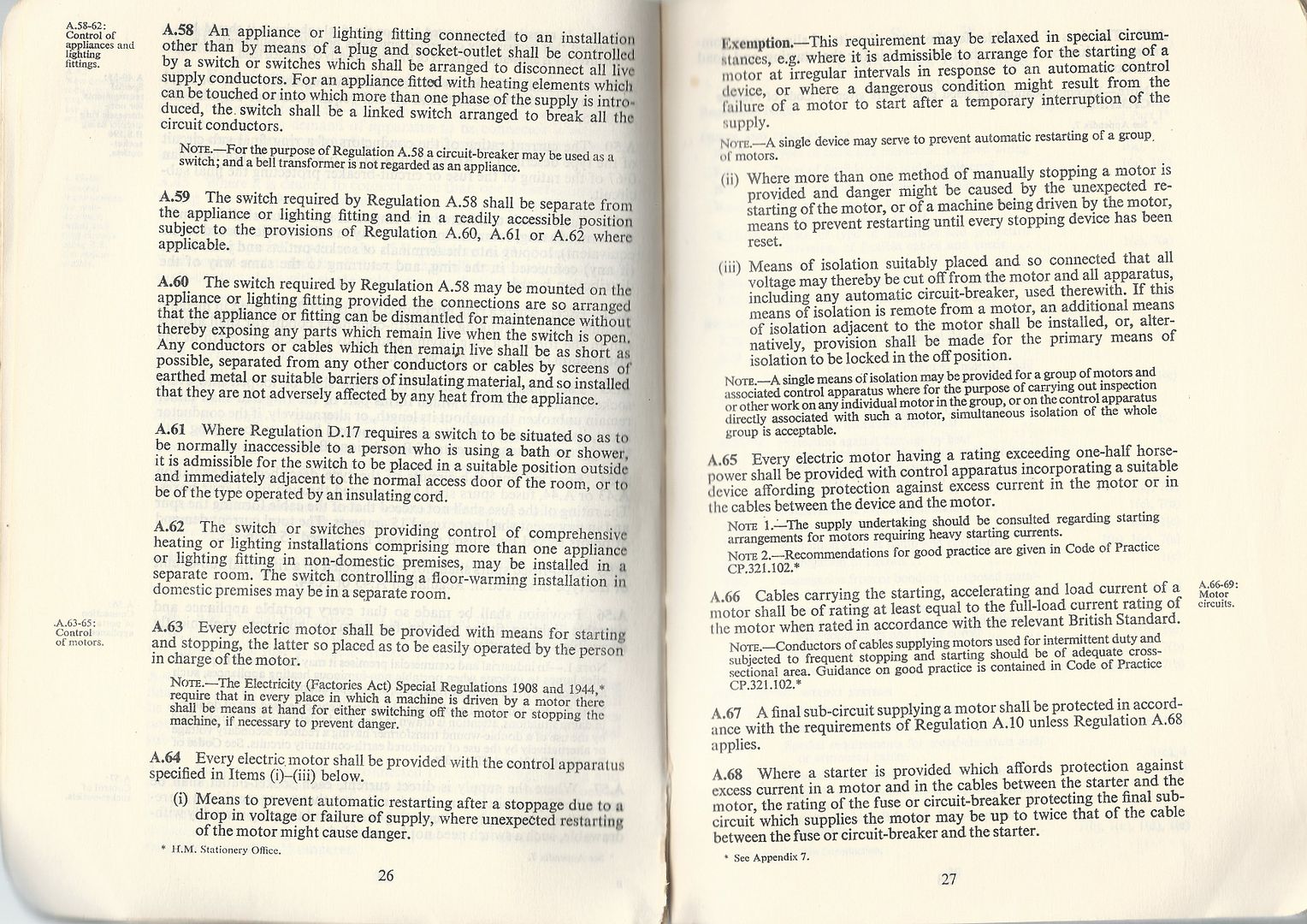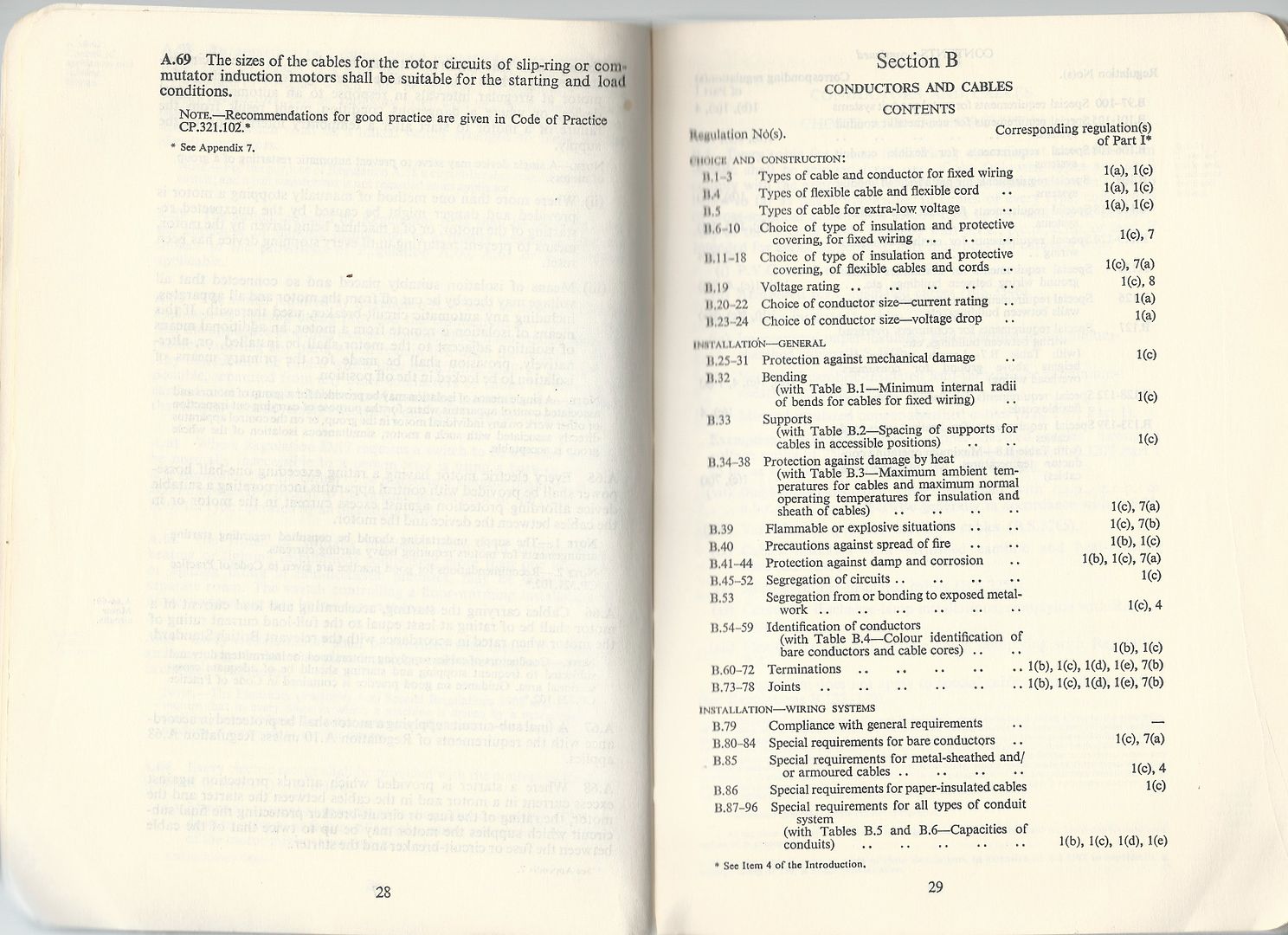I say 'almost' since, in the absence of fused plugs, there was no guarantee that the load plugged in would not exceed the 'rating' of the plug/socket.
I suppose we have to draw the line somewhere, and assume that for these purposes nobody is going to be wiring a 6kW load to a 15A plug! Of course, there were all those BS546 adapters which would allow up to three 5A plugs to be connected to a 5A socket, or two 5A plus one 15A plug on a 15A socket etc., so still not foolproof.
Interesting. Do I take it that we're talking about a minimum watts/ft² figure? What sort of figures are we talking about for, say, a dwelling?
Yes, it specifies the minimum, but there's nothing to stop you allowing for much more if you wish. The figure for a dwelling is 3 watts per square foot, which has been in place since at least the 1950's. That's
excluding dedicated circuits which are required for the kitchen & dining areas where higher-powered devices are likely to be concentrated.
To give a general overview of how it's done here, major appliances will each have a dedicated circuit. In the typical home that means a 40 or 50A 120/240V circuit where an electric range is used, and a 30A 120/240V circuit for a dryer. Central air-conditioning will have a 240V circuit sized to the unit (e.g. ours is 50A), and if there is any fixed electrical heating (baseboard heaters throughout etc.) then there will be one or more dedicated circuits for that.
The rest which follows is straight 120V. It's normal to provide a dedicated 15 or 20A circuit for a washer (20A is required in new homes now), and also dedicated 15 or 20A circuits for garbage disposal and dishwasher, if present. The NEC then requires that general-purpose outlets in the kitchen & dining areas be fed by a minimum of two 20A circuits, with the outlets distributed reasonably evenly between them, and with nothing else on those circuits (the requirement for two 20A kitchen/dining circuits goes back to 1959).
An amendment a few years ago now also specifies a separate 20A circuit for the bathroom (due to the increasing power of hair dryers, apparently); previously bathrooms were just grouped in with everywhere else.
The remainder of the home - general-purpose outlets in living rooms, bedrooms, and all other areas, plus fixed lighting in all areas - is then calculated on the 3W per sq. ft. basis using 15 and/or 20A circuits. So, for example, a 1500 sq. ft. house would need a minimum of two 20A circuits or three 15A circuits. It's normal to mix fixed lighting and wall receptacles on the same circuit.



